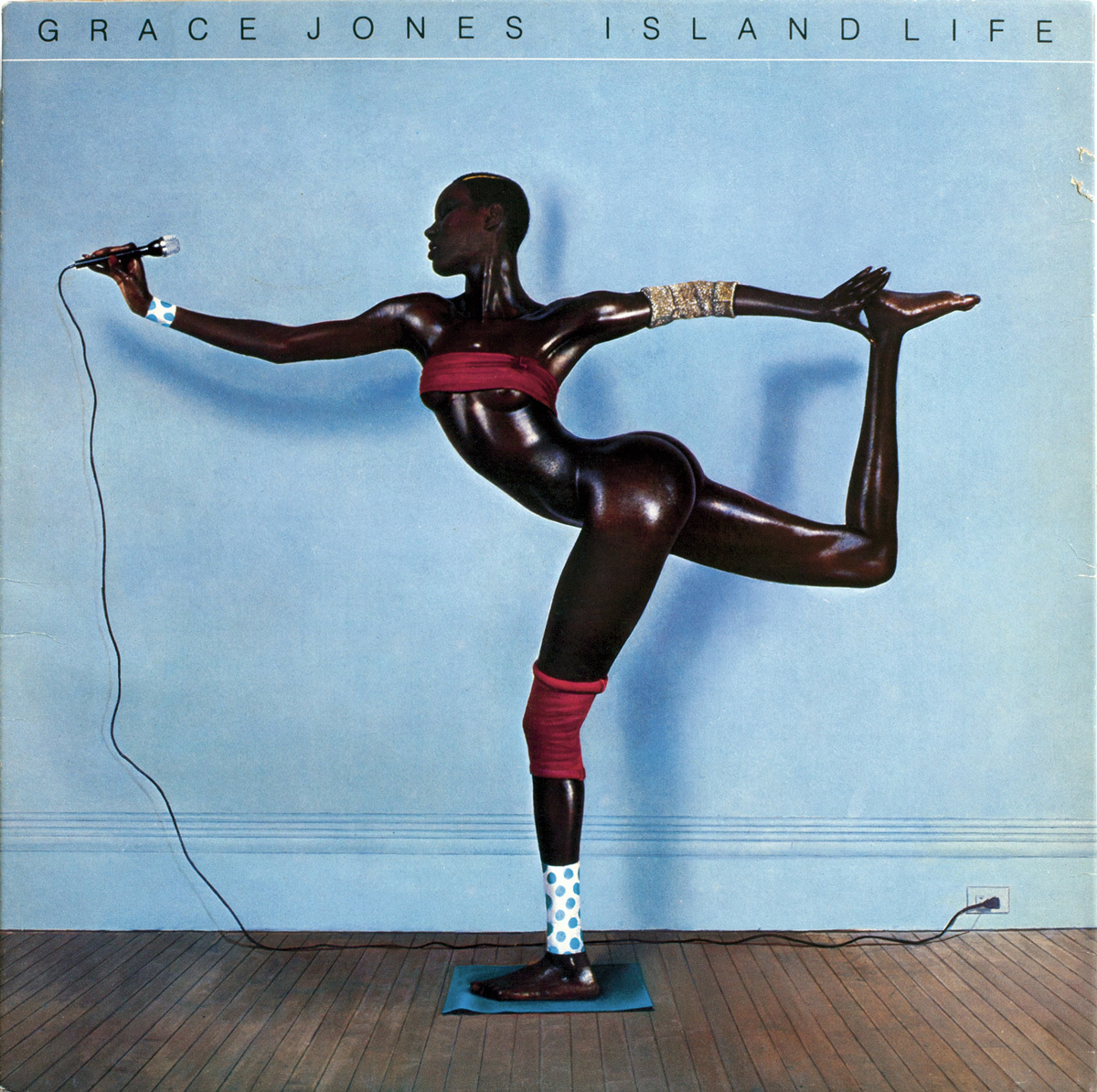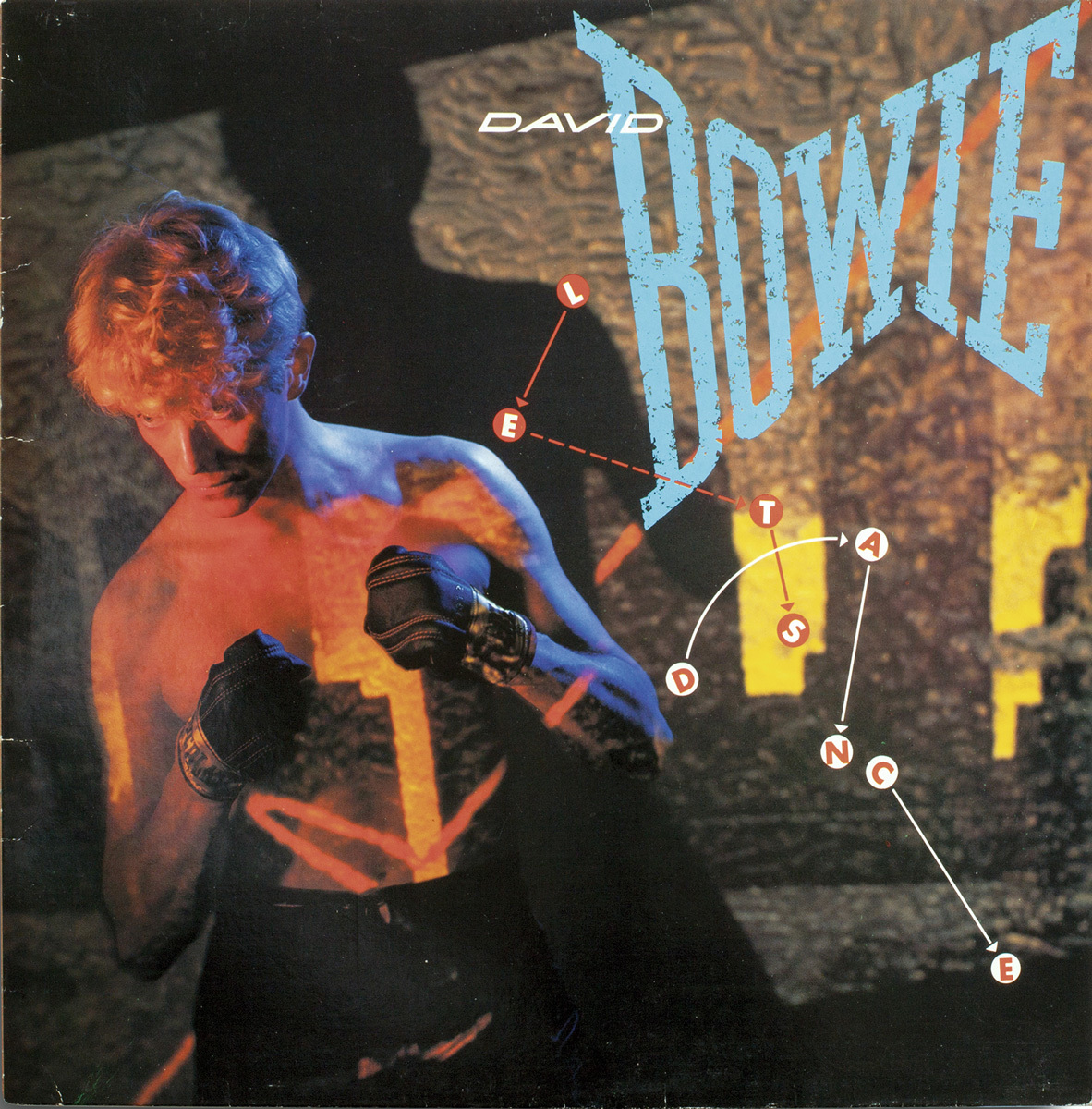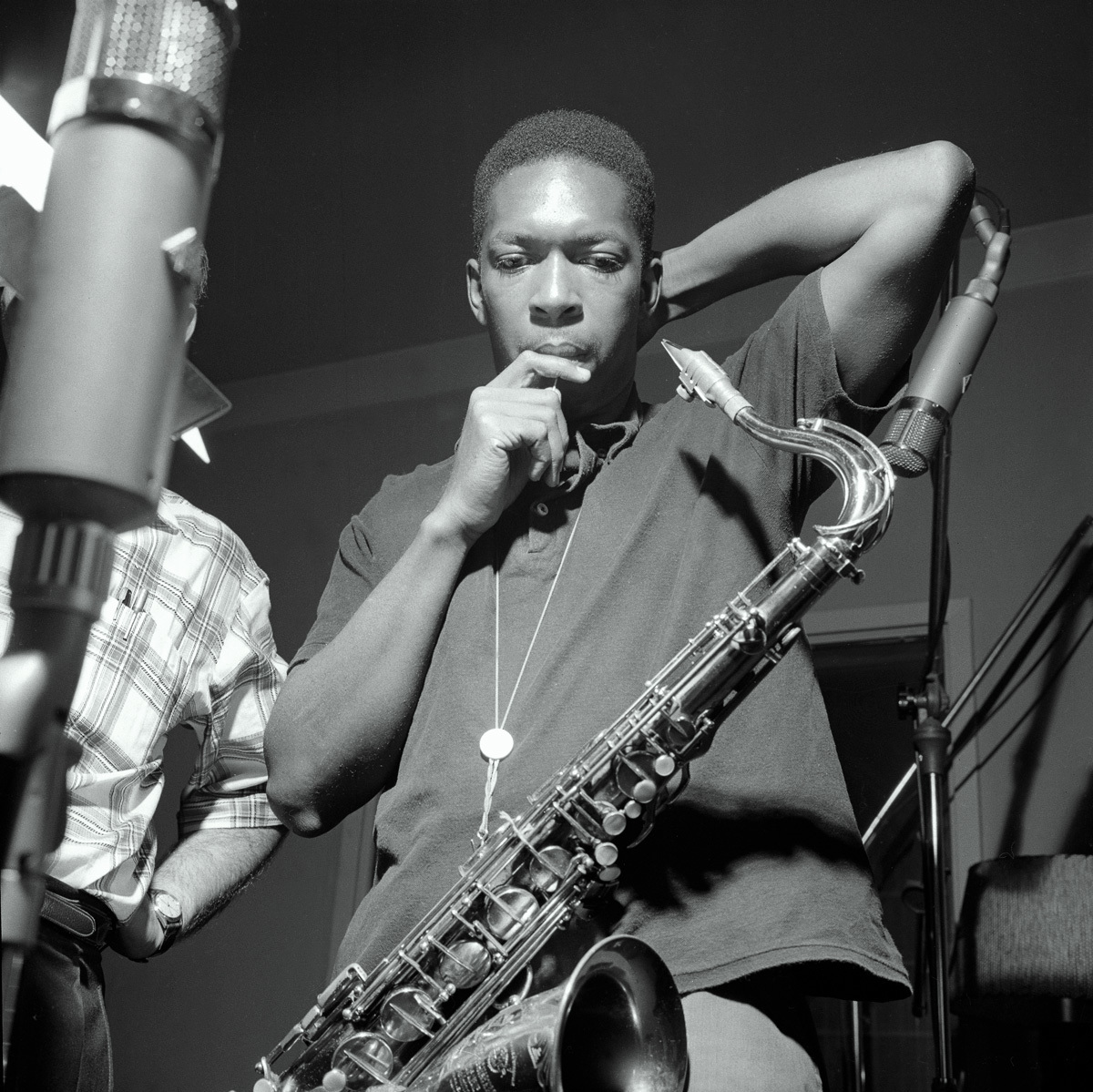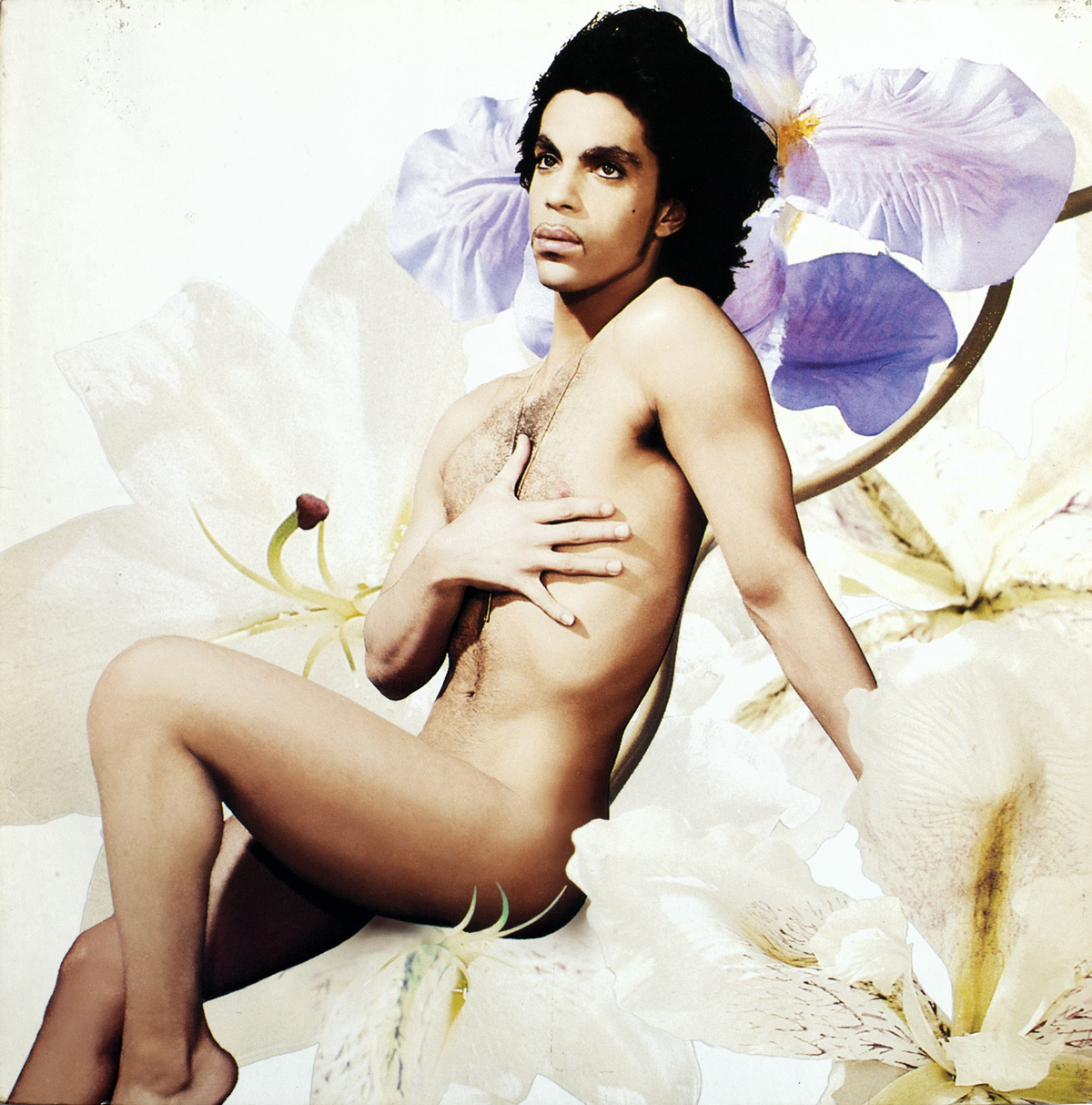When did music first enter your life?
By the 60s music had become an important vector that allowed my generation to break free of its parents and to wake up sexually. It’s the story of rock’n’roll which all started with the scandal of Elvis and his swivelling hips. In the 60s we had a thirst for life, we were desirous, and this was expressed through creativity — most of which happened via Afro-American music.
What was the role and significance of imagery in the media diffusion of music?
In the 1950s we obviously had much fewer images, there were no magazines yet. Images came from the movies! Working class people didn’t go to museums. For someone like me who was a choirboy, religious iconography was influential: an unclothed Christ, stained glass windows with burning saints — which I later rediscovered in rock poses, like the bare chested Jim Morrison with his arms outstretched. The revelation happened when I was eight years old and my sister came home with an Elvis 7″ single. I can still remember that photo of Elvis: black hair, a sexy pose, eyes shut in ecstasy, and a magnificent font which got used again later by the Clash for London Calling. And when we listened to the music on our record player — another revolutionary object — it was a mind blowing: “Hound Dog!” Then came the Stones, the Beatles, and Bob Dylan… While we didn’t understand all the words, we just knew what the songs were about! An entire generation across the globe tuned into these messages through the sounds and the imagery. Back then the format was square. Even TVs were square! That was modernity, caught within those few centimeters that we would swap and share. It was the Facebook of the day.

Had you already identified with the photographers filling those squares, like David Bailey doing the Rolling Stones?
We never even thought about who’d taken the images, we were just touched by the power of them. Looking back now certain names came to the fore of course. I looked a lot at Norman Seeff’s work. These record sleeves were like a whole new language with their own set of authors. We’d listen to music for hours while fantasizing over the picture, a bit like how we watch YouTube today. We’d annotate the covers, cross things out… Our pile of records was our Internet. My father was devastated because I’d shut myself away for hours listening to the same record over and over again, Axis: Bold as Love by Jimi Hendrix. It was the stuff of dreams.
What made you pick up a camera?
I’d have photographer’s files in my hands without the vaguest notion of that field. I stayed in touch with English people, who’d gone punk by then. I was hanging out with Bijou, Bashung; their records were in the process of being made. I suddenly had the idea of taking care of their record sleeves and suggested to an amateur photographer friend that we set up a collective. I did Téléphone’s first single covers that were sold on the black market. My friend had a car accident and he didn’t want to carry on, but I already had orders. I had to sell my record collection to buy a Hasselblad because I couldn’t find anyone else to do the pictures. Advertising and fashion photographers weren’t interested: rock music wasn’t their thing, and on top of that there was no acknowledgement or money to be made. So I learned how to take photos. What interests me is the subject. I get invited to do photo books but I’m just not that bothered. I never even go to photo exhibitions! But I am interested in technology; I started using Polaroids early on and I was the first to go digital. I have no nostalgia for the grain or for the rolls of film. The best medium is the one that allows me to work the fastest.

With Prince you did just one shot, but it certainly made its mark. How did that cover come about?
Before I met him, I was completely under Prince’s spell. There was no one above him. Sure there’d been Talking Heads, Devo, and a few others… But Prince! He was doing pop, electro, funk, he sang like an angel, he could play everything, he had the look, he had Wendy and Lisa. I fell head over heels in love with Prince. He asked me to make a video for him. I spent a week in his company at the time of Lovesexy. We were in the studio in Minneapolis and he said we were leaving the next day for Los Angeles and suggested I do the album cover. We were supposed to talk and find ideas in the plane. But then we weren’t together and so when we got to L.A. he invited me to come find and him at a club that night. And there he was with his Los Angeles entourage, Sheila E, Mike Tyson… As the night went on I began to get anxious, the studio was booked. Later he told me we’d talk over breakfast. Obviously I didn’t sleep a wink. So I went to the essence of a choir boy: the Sistine Chapel. Prince’s discourse is pretty apocalyptic, Sign O’ The Times, 1999, and yet at the same time kind of tantric, that way he talks about spirituality and sexuality. I did a little drawing during the night, starting from the idea of a nude. In the morning he said, “It’s perfect.” That same night we chose just one Ekta which I took back to Paris with me. Then I scanned that photo and used the only machine that could retouch in Paris. It was my friend Kiki Picasso who had the demonstration model. Prince took a plane and we all found ourselves in the kitchen, the kids horsing around with his bodyguards. In the end Prince destroyed everything, and he said to me, “I think what you did with the flowers was best.” The cover came out and got banned in quite a few states. It’s a religious image par excellence.

With the birth of videos, the record cover was pushed to the background. What were the financial implications? How did the two media revolve around each other?
In the 80s video was another visual accompaniment to sound, with a new dimension — movement. The new generation really got it, people like Rita Mitsouko and Etienne Daho. The video requires a lot more financial means and it wasn’t unusual for it to cost more than the album itself. It was the beginning of marketing, like with the luxury domain and packaging. I did a lot of work at that time and with hindsight I feel like my music hurt.
Any regrets?
No, it’s just an observation. Regrets would mean I’d done things dishonestly. These days music is reclaiming its rights. There are fascinating media/music adventures on the Internet that go way beyond simple packaging. There’s been a veritable mutation with creations that draw inspiration from contemporary art, that do incredible experiments. Except you don’t always get to see them! There are several worlds that co-habit on different planes. In the 60s the record cover did the same job: it created an entire language, an awakening, a whole new culture. Parents would see the record covers, but in a different way to the kids. It’s the same thing for the Internet generation.

Technical evolutions clearly affect your work.
I’ve always been very aware of format, means of diffusion, and of technological developments. Even today in a tiny form on iTunes, the record cover plays a role: it has to symbolize the synthesis of an artist. This square still has the same function. The vertical format came with magazines, The Face and i-D in England, and Actuel in France. Today it’s 16:9, the format best suited to mobile phone screens.
And you still thrive on the present.
I recently threw away tons of photos and negatives. I synthesized them by making books I’d been asked for. I did one every two weeks, it allowed me to organize and read my work, to see how things had evolved over time. There are things that come back constantly and then there are evolutions by decades. I was very colorful, a bit pop, and then very sexual, today I’m more into the emotional. Because ultimately I simply follow the era, I accompany it, I see the changes in society. You never know what will remain with time: will Vanessa Paradis just be a summer hit or more than that? Punk was something nihilistic and ephemeral, but in the end its spirit survived.
Total Records: Photography and the Art of the Album Cover is released October 27.
Credits
Text Matthew Whitehouse
